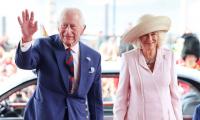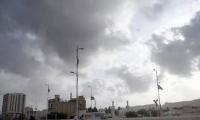After the Syrian Air, the state-owned Pakistan International Airlines (PIA) has earned the unpleasant distinction of being an airline with the highest number of employees on its rolls per aircraft and no reputed airline in the developed, semi-developed or developing world has a staff-to-aero plane ratio as high as that.
PIA thus has the world's second worst staff-to-plane ratio of 391 staffers per plane, reveals a hectic research conducted by the "Jang Group and Geo Television Network" that has taken into account the most recent productivity of 40 most famous international carriers exploring the skies and connecting more than 15,000 cities today.
At a juncture when, according to the International Air Transport Association (IATA) , around 75 per cent of the world’s airlines are at least majority owned by the private sector and more than $750 billion or one per cent of the global GDP is being spent on air transport, as many as 14,847 PIA employees (excluding daily wagers) are entrusted with the task to look after 38 aircraft in its small fleet---speaking volumes of how over-staffing, nepotism and cronyism are reigning supreme in this pivotal government-owned corporation.
The exact number of employees of the national flag carrier and the total number of aircraft was disclosed by PIA's Director Corporate Planning, Amir Ali, while he was briefing Senate's Special Committee on the Performance just over a week ago on January 26, 2016.
Now, if we take into account the number of daily wagers on the PIA pay-roll too (the exact number of which is unknown), then add it to the 14,847 confirmed staffers, and then divide it with the number of operational machines, the staff-to-plane ratio would jump to somewhere between 400 and 500---which is extremely alarming.
Remember, on January 22, 2013, the then Minister of State for Defence, Sardar Saleem Haider Khan, had told the Senate that of the 38 aircraft possessed by the PIA, only 25 were operational.
As far as the Syrian Arab Airlines is concerned, its employee-to-aircraft ratio is 1:400 as its 4,000 staffers are taking care of just 10 planes!
The employee-to-aicraft ratio is deemed to be one of the most vital benchmarks of calculating the productivity any airline around the world.
Now, suppose the incumbent Nawaz Sharif government does not privatise PIA and decides to restore its financial health by opting to cut the number of the national flag carrier's employees by 50 per cent and by not increasing the number of aircraft in its fleet, only then the employee-to-aircraft ratio will come to rest at a lot more respectable and globally-accepted figure of 195.36.
In scenario two, suppose the government does not reduce PIA's employees and instead doubles the number of aircraft in its fleet to 76, which is quite unlikely, then the employee-to-aircraft ratio will again stand at 195.36.
Interesting Mathematics!
And now let us assume a third scenario---again very unlikely---suppose the government reduces the number of the national flag carrier's employees by 50 per cent and also doubles the number of aircraft in its fleet to 76, then the staff-to-plane ratio will miraculously plunge to just 97.68.
But these are just assumptions because we are just taking into account the key factor of employee-to-aircraft ratio. If the massive corruption in the state-owned PIA is cut to half initially, the Nawaz Sharif government would not have to send many of the airline's employees packing.
An apple-to-apple comparison with Air India reveals that the Indian flag carrier, having 133 aircraft in its fleet, had succeeded in reducing its aircraft-to-employee ratio to 114 only by end March 2015, down from 135 in 2014 and about half of 221 in 2012!
An October 6, 2015 report posted on Air India website had stated: "Air India has achieved a substantial decrease in its aircraft-to-employee ratio in the financial year ended March 31, 2015. While the aircraft-to-employee ratio decreased to 1:114, the employee cost of the total cost decreased by 0.22 per cent at 11.68 per cent in the financial year 2015 as compared to 12.9 per cent in 2014. The present aircraft-to-employee ratio (1:114) which is half of what existed in 2012 (1:221) showcases how efficiently and strategically Air India is using its manpower."
An Indian newspaper "Mumbai Mirror" had gone on to give even better projections.
An October 9, 2015 report of the "Mumbai Mirror" had maintained: "Air India has successfully reduced its air the air-craft-to-employee ratio from 300 per flight to 108, cutting it down by almost two-third in the last two years."
Here follows the staff-to-aircraft ratios of world's 40 most famous international carriers that annually generate over US$121 billion in tax revenues and spend in excess of US$212 billion per annum on jet fuel:
The employee-to-aircraft ratio of Ireland's Ryanair is just 29.69 because its 9,501 employees are looking after a fleet of 320 aircraft.
The staff-to-plane ratio of Garuda Indonesia, the flag carrier of Indonesia, is 56.15 because its 7,861 employees are looking after a fleet of 140 aircraft.
The employee-to-aircraft ratio of Turkish Airlines is just 63.36 because its 18,882 employees are looking after a fleet of 298 aircraft.
The staff-to-plane ratio of American Southwest Airlines is only 67.76 only because its 46,278 employees are looking after a fleet of 683 aircraft. Its revenues stand at $18.6 billion.
The staff-to-plane ratio of Air China is just 70.39 because its 25,269 employees are looking after a fleet of 359 aircraft.
The employee-to-plane ratio of Finland's FinnAir is 76.01 because its 5,473 employees are looking after a fleet of 72 aircraft.
The staff-to-aircraft ratio of the Caribbean Airlines of Trinidad and Tobago is 76.19 because its 1600 employees are looking after a fleet of 21 aircraft.
The staff-to-aircraft ratio of Scandinavian Airlines or SAS is 88.70 because its 12,329 employees are looking after a fleet of 139 aircraft.
The employee-to-plane ratio of Swiss International Air Lines is 97.19 because its 8,067 employees are looking after a fleet of 83 aircraft.
The staff-to-aircraft ratio of Air New Zealand Limited is 101.85 because its 11,000 employees are looking after a fleet of 108 aircraft.
The staff-to-aircraft ratio of American Delta Airlines is 110.80 only because its 80,000 employees are looking after a fleet of 722 aircraft. Its revenues stand at $40.3 billion.
The employee-to-aircraft ratio of International Airlines Group is 113.30 only because its 59,484 employees are looking after a fleet of 525 aircraft. Its revenues stand at $22.7 billion.
The staff-to-aircraft ratio of United Airlines is 117.48 only because its 84,000 employees are looking after a fleet of 715 aircraft. Its revenues stand at $38.9 billion.
The staff-to-aircraft ratio of American Airlines is 120.66 only because its113,300 employees are looking after a fleet of 939 aircraft. The revenues of American Airlines stand at $42.7 billion.
The staff-to-plane ratio of Taiwan's EVA Air is just 124.04 because its 7,815 employees are looking after a fleet of 63 aircraft.
The employee-to-aircraft ratio of Italy's Alitalia is just 127.60 because its 14,036 employees are looking after a fleet of 110 aircraft.
The staff-to-aircraft ratio of British Airways is just 135.07 because its 39,710 employees are looking after a fleet of 294 aircraft.
The staff-to-plane ratio of Spain's Iberia Air Lines is 140.63 because its 18,000 employees are looking after a fleet of 128 aircraft.
The staff-to-plane ratio of Japan Airlines is 141.41 because its 31,534 employees are looking after a fleet of 223 aircraft.
The staff-to-plane ratio of Egypt Air is 142.86 because its 9,000 employees are looking after a fleet of 63 aircraft.
The employee-to-aircraft ratio of UAE's Eithad Airlines is 148.84 because its 17,712 employees are looking after a fleet of 119 aircraft.
The staff-to-plane ratio of Saudi Arabian Airlines is just 152.40 because its 24,842 employees are looking after a fleet of 163 aircraft.
The staff-to-aircraft ratio of Air Canada is just 157.89 because its 27,000 employees are looking after a fleet of 171 aircraft.
The staff-to-aircraft ratio of Chile's LATAM is just 165.85 because its 53,072 employees are looking after a fleet of 320 aircraft.
The employee-to-aircraft ratio of China Eastern Airlines is 166.36 only because its 68,874 employees are looking after a fleet of 414 aircraft. Its revenues stand at $14.6 billion.
The staff-to-plane ratio of Air France-KLM Airlines is 166.67 only because its 94,666 employees are looking after a fleet of 568 aircraft. Its revenues stand at $27.8 billion.
In case of Iran Air, it is 174.41 because its 7,500 employees are looking after a fleet of 43 aircraft.
The staff-to-aircraft ratio of China Southern Airlines is 175.78 only because its 90,000 employees are looking after a fleet of 512 aircraft. Its revenues stand at $17.6 billion.
The staff-to-aircraft ratio of Qatar Airways is just 179.19 because its 31,000 employees are looking after a fleet of 173 aircraft.
The staff-to-aircraft ratio of Malaysian Airlines is just 181.82 because its 14,000 employees are looking after a fleet of 77 aircraft.
The employee-to-aircraft ratio of Russian Aeroflot is 187.21 because its 30,328 employees are looking after a fleet of 162 aircraft.
The staff-to-aircraft ratio of Lufthansa Airlines is 193.13 because its 118,781 employees are looking after a fleet of 615 aircraft. Its revenues stand at $33.8 billion.
The staff-to-aircraft ratio of the South African Airways is 216.81 because its 11,491 employees are looking after a fleet of 53 aircraft.
The staff-to-aircraft ratio of Australian Qantas is 218.49 because its 28,622 employees are looking after a fleet of 131 aircraft.
The employee-to-aircraft ratio of Singapore Airlines is 219.84 because its 23,963 employees are looking after a fleet of 109 aircraft.
The employee-to-aircraft ratio of Emirates Airlines is 231.53 because its 56,725 employees are looking after a fleet of 245 aircraft. Its revenues stand at $24.2 billion.
The staff-to-aircraft ratio of Sri Lankan Airlines is 283.33 because its 6,800 employees are looking after a fleet of 24 aircraft.
The staff-to-aircraft ratio of Air France is 295.97 because its 69,553 employees are looking after a fleet of 235 aircraft.
And finally, the employee-to-aircraft ratio of Thai Airways is 308.82 because its 25,323 employees are looking after a fleet of 82 aircraft.
Federal education secretary Mohyuddin Wani Ahmad Wani gestures as he speaks in a meeting. — ndrmf.pk/FileIslamabad:A...
Participants pose for a photo during a book launching ceremony. — LinkedIn/Mughiza Imtiaz/File Islamabad:In an age...
Foreign ambassadors cut a cake to celebrate the Christmas event organised by Chairman Pakistan Cultural Forum and...
DG FDE Syed Junaid Ikhlaq visits the ‘Stargazing Amid Bonfire’ event hosted by Islamabad Model College , F-7/4...
HSA's Prof Shahzad Ali Khan , the Chief Guest, receiving a memento from Prof Shahid Baig of the PAS along with QAU's...
IBCC staff attend a workshop to enhance IT skills at Islamabad College for Girls, F-6/2 on December 21, 2024. —...







